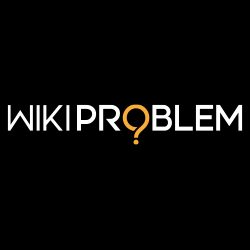How To Start On Page SEO
Search engine optimization (SEO) is the process of optimizing your website to rank higher in search engine results pages (SERPs) for relevant queries. On-page SEO is a critical part of the optimization process that involves optimizing individual web pages to improve their visibility and relevancy for specific keywords. In this article, we will discuss how to start with on-page SEO in detail.
Conduct Keyword Research
The first step in any SEO campaign is to conduct keyword research. This involves identifying the keywords and phrases that your target audience is using to search for information related to your business, products, or services. Keyword research will help you to identify the most relevant and high-volume keywords to target on your web pages. Tools like Google Keyword Planner, Ahrefs, and SEMrush can help you identify the most relevant keywords for your website.
Create a Content Strategy
Once you have identified your target keywords, it's time to create a content strategy that incorporates those keywords. The content on your website should be relevant, engaging, and informative to your audience. Your content should be unique and answer the questions that your target audience is searching for. This could be in the form of blog posts, product descriptions, or service pages. Your content should be optimized with relevant keywords and include meta descriptions and header tags.
Optimize Title Tags and Meta Descriptions
Title tags and meta descriptions are essential on-page SEO elements that provide search engines with context about the content on your website. A title tag is the headline that appears in the search engine results pages, while a meta description is a short summary of the content on the page. Your title tags and meta descriptions should include the primary keyword and be engaging to encourage users to click through to your website. Ensure that the length of your title tags is between 50-60 characters and meta descriptions between 150-160 characters.
Utilize Header Tags
Header tags (H1, H2, H3, etc.) are used to structure the content on your web pages. The H1 tag is the most important header tag, and it should be used to describe the main topic of the page. The H2 and H3 tags are used to describe subtopics. Header tags help search engines understand the structure of your content and the hierarchy of the information on the page. They also make it easier for users to read and understand the content.
Optimize Images
Images are an essential component of any website. However, they can also slow down the loading time of your website if they are not optimized correctly. Optimizing images involves compressing their file size and using relevant file names and alt tags. Alt tags describe the content of the image and provide context for search engines to understand what the image is about. Use relevant keywords in your alt tags, but ensure that they accurately describe the image.
Improve Page Load Time
Page load time is an important factor in on-page SEO. A slow-loading website can lead to a poor user experience, resulting in higher bounce rates and lower search engine rankings. To improve page load time, you can compress images, use caching, and minify code. Additionally, use a content delivery network (CDN) to distribute your website content across multiple servers, improving load time for users in different locations.
Make Your Website Mobile-Friendly
More and more users are accessing websites on their mobile devices. Therefore, it is crucial to have a mobile-friendly website to provide a better user experience. A mobile-friendly website should have a responsive design, load quickly, and be easy to navigate on a small screen.
Monitor Your On-Page SEO
Finally, it is essential to monitor and track the progress of your on-page SEO efforts. Use tools like Google Analytics and Google Search Console to track website traffic, keyword rankings, and other important metrics.
Regularly analyze the data to determine what is working and what needs to be improved. Adjust your on-page SEO strategy accordingly to optimize for better performance and higher rankings.
On-page SEO is a critical aspect of any SEO strategy. By optimizing your website's individual web pages, you can improve their visibility and relevance for specific keywords, leading to better search engine rankings and increased website traffic.
To start with on-page SEO, you need to conduct keyword research, create a content strategy, optimize title tags and meta descriptions, utilize header tags, optimize images, improve page load time, make your website mobile-friendly, and monitor your on-page SEO efforts.
Remember, on-page SEO is an ongoing process. Regularly analyze your website's performance and adjust your strategy accordingly to stay ahead of the competition and improve your search engine rankings.
